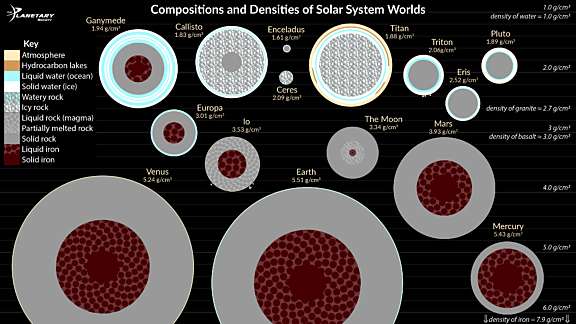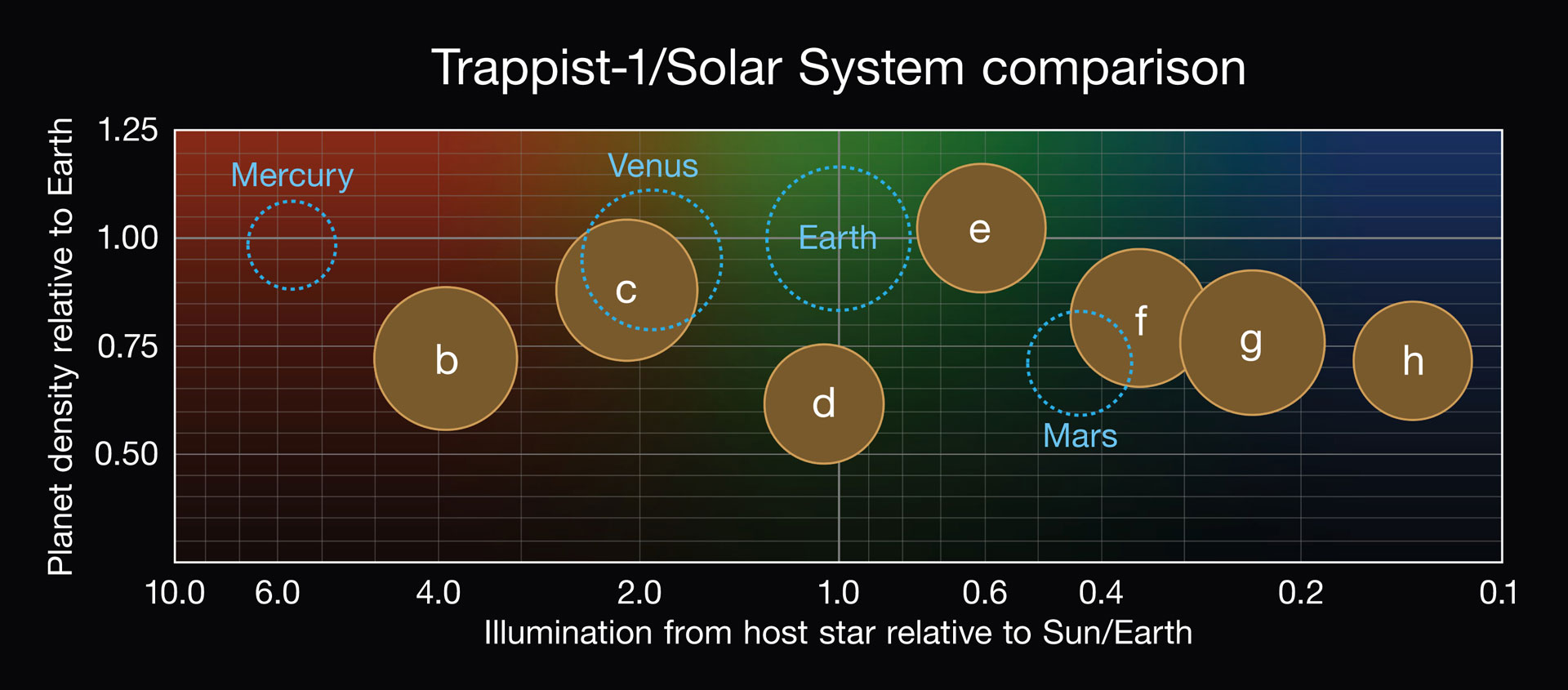

Credit: NASA/JPL-Caltech NASA/JPL-CALTECH


densities, so they likely have a similar compositions. Three possible interiors of the TRAPPIST-1 exoplanets. The fact that these planets are less dense than the terrestrial planets of our solar system indicates a different composition to be sure, says Asphaug. Whether this is because of less iron available to condense to the core, or more water mixed into the crust and mantle remains unclear, he says. The new mass estimates show that the densities of all seven planets are much more similar than we thought before, he says.
PLANETS COMPOSITIONS FULL
“The TRAPPIST-1 system would in this sense maybe resemble the progenitor bodies from which the Earth and Venus were ultimately built, being less dense because they never suffered these giant impacts,” said Asphaug.Įven if the individual terrestrial planets from TRAPPIST-1 and the Solar System look very similar in terms of mass and size, the full system architecture is very different, Simon Grimm, one of the paper’s co-authors and an astrophysicist at the University of Bern, told me. That’s because the kind of giant impact accretion that we believe made Earth, Venus, Mars, Mercury and the Moon was a wasteful process and disposed of a fraction of the lower-density materials in each collision (a few percent to tens of percent), says Asphaug.


 0 kommentar(er)
0 kommentar(er)
